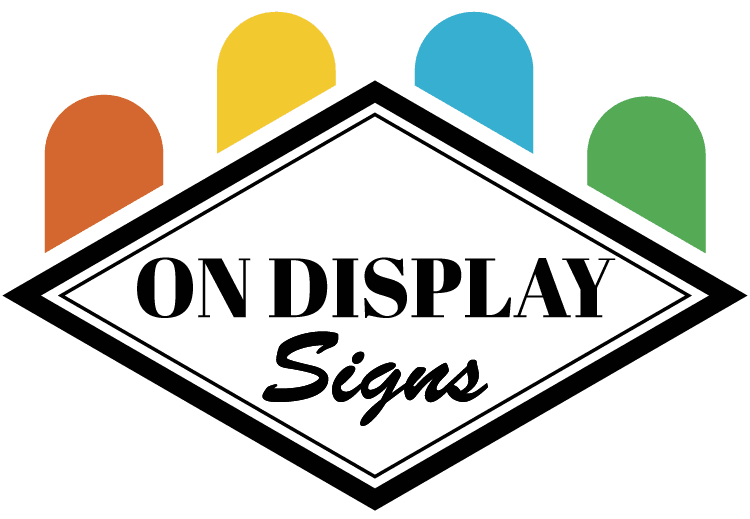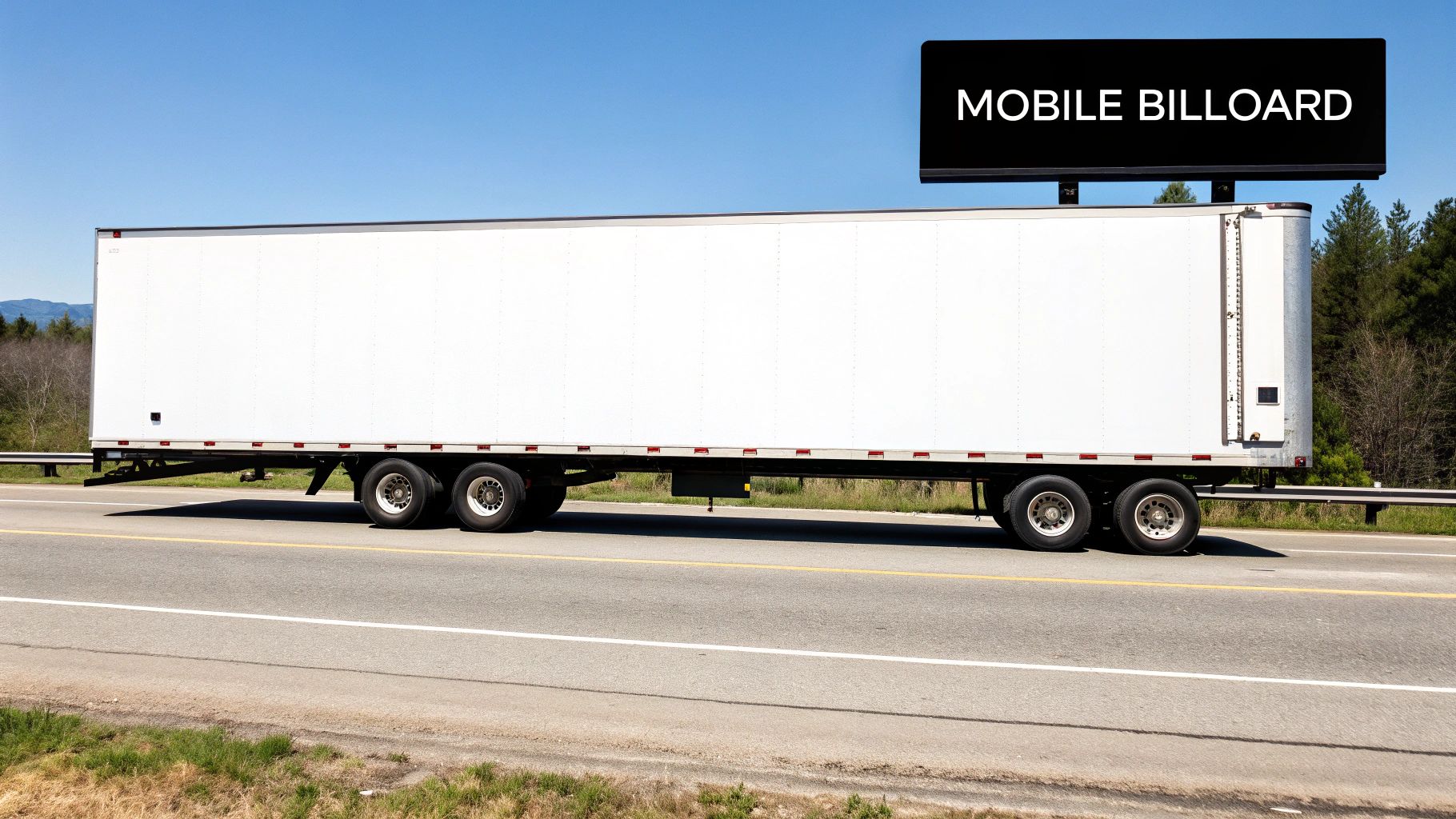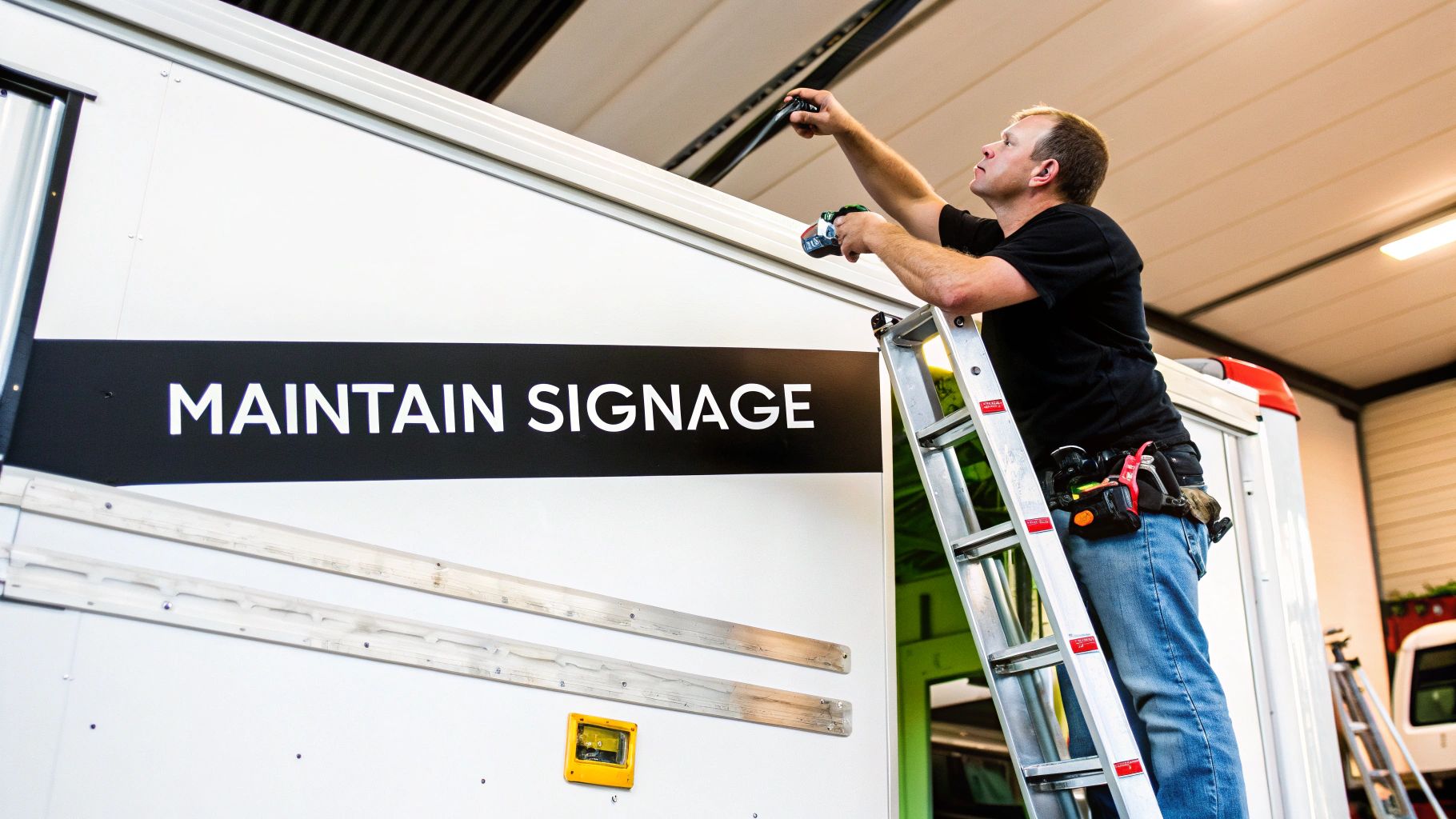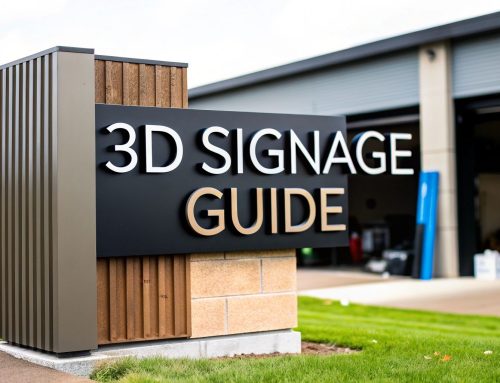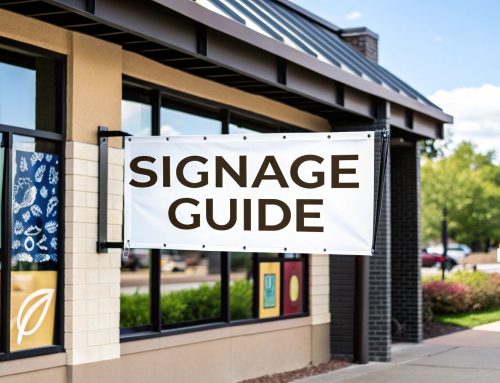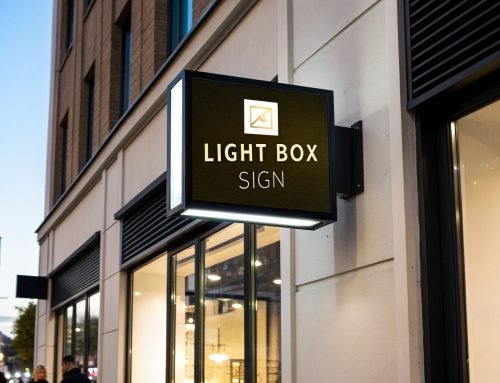Effective signage for trailers is about more than just a logo. It's about turning a functional asset into your best mobile billboard, one that generates leads and builds your brand’s reputation everywhere it travels—highways, job sites, and local neighborhoods.
Turn Your Trailer Into a Mobile Billboard
That trailer you haul every day? It’s a massive, rolling marketing platform. Getting it right isn't just about the visuals; it’s a strategic process. The first and most important step is figuring out exactly what you want that sign to do for you. That goal will shape every other decision you make down the line.
Without a clear purpose, even the slickest-looking sign won't deliver results. A local roofing contractor’s main objective is getting homeowners to call for a quote. Their sign needs to be designed for that. For example, it should have a bold, easy-to-read phone number and a clear offer like "Free Roof Inspections." On the other hand, a regional logistics company is more focused on building brand recognition. Their sign would prioritize a clean, professional logo and USDOT number to build trust with commercial partners.
Define Your Core Objectives
Before you even think about colors or fonts, you need to nail down your primary goal. Are you trying to:
- Generate direct leads? If so, your phone number and a clear call to action like "Call for a Free Estimate" need to be impossible to miss. A plumbing company, for instance, should make their 24/7 emergency service number the largest element.
- Increase brand awareness? Here, the focus shifts to a clean, memorable logo and a professional presentation that builds trust and recognition over time. A construction supplier might focus on just their logo and a single tagline like "Building Materials Delivered."
- Meet compliance requirements? For commercial fleets, displaying DOT numbers and company information is non-negotiable. Legibility and clarity become the absolute top priorities.
A well-defined objective is the filter for all your creative choices. If your goal is making the phone ring, a fancy but hard-to-read font is a poor choice, no matter how good it looks up close.
This quick guide breaks down the essential planning process for effective signage for trailers.
Before you can build an effective sign, you need a solid foundation. This table outlines the key thinking that should happen at the very beginning of your project.
Strategic Planning for Your Trailer Signage
| Planning Stage | Primary Objective | Key Decisions to Make |
|---|---|---|
| Goal Setting | Determine the sign's main job. | Is this for lead generation, brand awareness, or compliance? |
| Audience Identification | Pinpoint who needs to see and act on the sign. | Are you targeting homeowners, commercial clients, or other drivers? |
| Budget Allocation | Establish a realistic budget for the entire project. | How much can you invest in design, materials, and installation? |
Taking the time to think through these stages is what separates impactful signage from simple decoration. Getting these elements right from the start ensures your investment pays off. And if you're looking for some initial sparks of creativity, check out these business sign ideas. This strategic approach ensures every dollar you spend contributes directly to your business’s growth.
Selecting the Right Signage Materials and Type
Choosing the right material for your trailer signage makes all the difference. It's the line between a sign that looks sharp for years and one that peels, fades, and cracks after a single harsh season. Your trailer puts up with a lot—scorching sun, freezing rain, road salt, and constant vibration. The materials you pick have to be tough enough to handle it all while looking great.
The decision usually boils down to two main camps: traditional printed signage and modern digital displays. Each one has its place, and your choice will come down to durability, cost, and how often you need to change your message.
Traditional Printed Signage Materials
For most businesses, high-quality printed signage hits the sweet spot between cost, durability, and visual punch. These aren’t your average prints; they’re engineered specifically for the rigors of the road. Thanks to big leaps in printing technology, today's options are more vibrant and resilient than ever.
The printed signage market, currently valued at USD 43.28 billion, is still growing, with transit graphics leading the charge. Modern techniques like UV-curable inkjet printing have really upped the game for signage for trailers, creating brilliant graphics that last longer. You can dig into the full report on printed signage market trends from Mordor Intelligence.
Here are a couple of the most reliable materials we work with:
- Aluminum Composite Panels (ACP): These are exceptionally rigid and durable. They're built with a polyethylene core pressed between two thin aluminum sheets. ACP is perfect for flat, rigid signs mounted directly to the trailer side, giving you a smooth, professional finish that won’t warp or weather. For example, a heavy equipment rental company would benefit from ACP signs because they resist dents and dings on a busy job site. You can learn more about this versatile option in our guide to aluminium composite signage.
- Laminated Vinyl Graphics: This is the real workhorse for trailer graphics. We print your design on a high-quality vinyl base and then cover it with a clear laminate. That lamination is non-negotiable—it provides crucial UV protection to stop fading and adds a tough-as-nails layer of defense against scratches and road grime.
When to Choose Digital Signage
Digital signage is a bigger upfront investment, no doubt about it. But in return, you get flexibility that printed signs just can't match. We're talking about rugged, weatherproof LED or LCD screens mounted right onto the trailer.
Key Insight: Digital signage is the clear winner for businesses with dynamic messaging needs. If your promotions, services, or routes change all the time, being able to update your message instantly can deliver a massive return on investment.
Think about these real-world scenarios:
- A logistics company could display real-time updates on available cargo space or even advertise third-party services on different routes.
- An event company could change its trailer signage on the fly to promote the specific concert or festival it's currently working.
- A retailer with a mobile fleet could run geo-targeted ads, switching up promotions based on the neighborhood the trailer is passing through.
For a local contractor, however, the cost and complexity of digital screens is probably overkill. A durable, well-designed ACP or vinyl sign that clearly shows their services and contact info will provide much better long-term value. Your choice should always come back to your specific business model and what you're trying to achieve.
Designing Graphics That Command Attention on the Road
When a potential customer drives past your trailer on the highway, you have about three seconds to make an impression. That’s it. That tiny window means your design can't just be artistic; it has to be a masterclass in quick, clear communication.
An effective design for a moving target isn’t about cramming in every detail. It's about boiling your entire message down to a single, powerful snapshot. A cluttered sign full of text, competing images, or fussy fonts just becomes visual noise that drivers tune out. Simplicity is your strongest ally here.
Prioritize Clarity Over Complexity
The single biggest mistake we see businesses make is trying to tell their whole story on the side of a trailer. A laundry list of services, multiple phone numbers, and an intricate logo will overwhelm anyone, especially at 70 mph. You need a rock-solid visual hierarchy that forces the eye to the most important info first.
Your trailer's large, flat sides and the rear are your prime real estate. Think of them as your main canvases and focus on just three things:
- Your Company Name and Logo: Make this the largest, most dominant element on the sign. It’s your signature, and it has to be recognizable from a serious distance.
- A Core Service or Value Proposition: What do you do? Get it down to two or three powerful words. "Commercial Roofing" is instantly understood. "24/7 Plumbing" leaves no room for doubt.
- Contact Information: A website and a phone number are all you need. Keep them big and bold. If you have a simple, memorable URL like SmithRoofing.com, make that the star.
For example, a landscaper could use a simple design: a large, clean logo, the words "Lawn Care & Design," and a bold phone number. That's it. A passing driver gets all the essential information in a single glance.
Harness the Power of Contrast and Legibility
The colors and fonts you pick aren't just about branding; they are practical tools that determine whether your sign works or fails. What looks sharp on a business card can easily turn into an unreadable smudge from 50 yards away.
High contrast is absolutely non-negotiable. Dark text on a light background (or the reverse) is the proven standard for a reason. A deep navy blue logo on a white trailer will always beat a medium gray logo on a silver one. Think in terms of classic, bold pairings: black on yellow, or a deep forest green on white.
A three-month study by 3M showed a single vehicle graphic could generate up to 16 million unique impressions in a year. To make those impressions count, your font must be readable at a distance and in motion.
Your choice of font is just as critical. Steer clear of thin, script, or overly decorative fonts—they're a recipe for illegibility. Stick with clean, bold, sans-serif typefaces like Helvetica, Arial, or Franklin Gothic. These are workhorse fonts built for clarity, and they hold their shape when viewed at speed or from an angle.
We cover this in more depth in our guide to choosing the best fonts for metal signs, and the same core principles of strength and readability apply directly to making your trailer signage effective.
How to Navigate DOT Rules and Local Regulations
Designing a great trailer sign is only half the battle. The other half? Making sure it’s legal. This is where things can get tricky, but ignoring the rules is a surefire way to get hit with expensive fines and legal headaches.
Thankfully, the core requirements are pretty straightforward once you know what you’re looking for. Let’s break down what you need to know.
Understanding Federal DOT Mandates
The big one to watch out for is the U.S. Department of Transportation (DOT). If your trailer is used for commercial purposes, displaying certain information isn't just a good idea—it's federal law. These rules exist so your vehicles can be quickly identified on the road.
For any commercial vehicle crossing state lines, the Federal Motor Carrier Safety Administration (FMCSA) lays out clear guidelines. The information must be clearly visible on the trailer or the truck pulling it.
Beyond your logo and marketing message, you’ll need to understand the specific DOT sticker requirements for your fleet to get every detail right.
Here's what the feds require:
- Legal Business Name: This must be the official name your business is registered under. No nicknames or DBAs unless they are also officially registered.
- USDOT Number: Your unique number must be displayed, preceded by the letters "USDOT."
- Location: The city and state of your main place of business.
The lettering for this information has to be at least 2 inches high and clearly readable from 50 feet away in daylight. It also needs to be in a color that contrasts sharply with your trailer’s background. Think black on white, not beige on tan.
Don't Overlook Local Ordinances
While the DOT covers you on the highway, local rules kick in when your trailer is parked. This is an easy one to miss. Many cities and counties treat a branded trailer left in one spot for a while as a temporary sign, which can trigger a whole different set of regulations.
Imagine a contractor leaving a branded trailer at a job site for a few weeks. In the eyes of a local zoning officer, that’s no longer a vehicle—it's a stationary advertisement. If you didn't check the local sign ordinances, you could be facing an unexpected fine.
The rules can change dramatically from one town to the next. It’s always smart to get familiar with local sign permit requirements before you park a trailer long-term.
A Simple Compliance Checklist
Before your trailer rolls out, run through this quick mental checklist to make sure you’re covered:
- Is our legal business name displayed correctly?
- Is our USDOT number on there and formatted right?
- Does the lettering meet the 2-inch height and 50-foot visibility rule?
- Is the text color easy to read against the background?
- Have we looked into local rules for parked trailers?
Getting ahead of these federal and local rules ensures your trailer signage works for you, not against you.
The Future of Trailer Advertising and Market Trends
Investing in high-quality signage for trailers is about more than just getting your name out there today—it’s about positioning your business for where the market is headed. Outdoor advertising isn't what it used to be, and your fleet is perfectly situated to take advantage of some major shifts.
Think about it: as cities grow and supply chains get more complex, your trailers are on the front lines. Every new construction site, distribution hub, and housing development is another place your mobile billboard can make a serious impression. Your everyday logistics are now a powerful marketing engine, constantly putting your brand in front of new eyes.
The Expanding Market for Mobile Signage
The demand for signs that work is absolutely exploding, not just here but globally. This trend confirms what smart business owners have known for a while: impactful branding in high-traffic areas is a game-changer. Your trailer isn't just a vehicle; it's a key player in this massive field.
Right now, the global signage market is valued at around USD 52.7 billion. But it's projected to hit roughly USD 97.3 billion by 2035. That's a huge jump. It's being driven by things like urban expansion and smart city projects, especially in places like the USA. You can dig into the numbers yourself in this growing signage market from Future Market Insights.
This isn't just an abstract statistic. It confirms that visibility is currency. A professionally signed trailer isn't just an expense; it's a mobile asset that gains value as the advertising world around it grows.
This really drives home the point that your trailer signage isn’t a cost. It’s a savvy investment in your brand’s future.
The Rise of Digital Integration
While a classic, well-designed vinyl sign will always be a workhorse, new tech is opening up some seriously cool possibilities. Digital integration is the next big thing for trailer advertising, offering a dynamic edge that static signs just can’t touch.
We're not just talking about putting a screen on a trailer. We're talking about smart, adaptable marketing platforms. Imagine a trailer that can:
- Display targeted ads that change based on location. Picture showing one promo in a commercial district and a completely different one in a residential neighborhood.
- Run time-sensitive offers. A food service trailer could advertise a lunch special, or a delivery vehicle could announce a flash sale—all in real time.
- Provide live updates. A logistics company could display cargo availability, or you could flash a "now hiring" message when parked near a job fair.
This technology makes mobile advertising far more interactive and responsive. You can see how businesses are already using digital sign LED solutions to grab attention. By getting a handle on these trends now, you can build a branding strategy for your fleet that works great today and is ready for whatever comes next.
Installation and Maintenance That Protects Your Investment
Even the most brilliant trailer sign will fail if the installation is sloppy or maintenance gets ignored. Protecting your investment isn't a one-and-done deal; it's about getting the details right from day one so your mobile billboard stays sharp for years. It all starts with the surface.
If the trailer isn’t perfectly clean, dry, and free of any wax or road grime, nothing else matters. Any little bit of residue left behind will kill the adhesion, leading to peeling, bubbling, and a sign that looks old before its time. Getting this prep work right is the single most important factor for a lasting install.
Best Practices for Long-Term Care
Once your sign is perfectly installed, a simple maintenance routine will keep it looking professional. It doesn't take much, but these habits will prevent premature fading and physical damage, preserving the polished look your brand deserves.
- Clean Gently: Stay away from high-pressure washers. They're notorious for lifting the edges of graphics and damaging the print. Instead, use a soft cloth or sponge with mild soap and water, and always rinse it clean to avoid leaving a film.
- Do a Quick Walk-Around: After a long haul or a nasty storm, take a minute to inspect the trailer. Look for any lifting edges, small scratches, or other damage. Catching these little issues early stops them from becoming a full-blown replacement job.
- Digital Screen Care: If you have a digital display, just wipe it down with a soft, dry microfiber cloth to keep dust off. Make sure all the connections are tight and the weatherproof seals are intact—moisture is the enemy.
Proper maintenance isn't just about looks; it's about safeguarding your investment. A well-cared-for sign can easily last its full intended lifespan, maximizing the return you get from every dollar spent.
Of course, the sign is only as good as the surface it’s on. Keeping the trailer's body in great shape is just as critical. For a deep dive into preserving that foundational surface, you can learn how to protect car paint like a pro. Taking these practical steps ensures your signage keeps representing your brand with the quality and professionalism you paid for.
Common Questions About Trailer Signage
When you're ready to put your brand on the road with signage for trailers, a few questions always come up. We get it. Let’s clear up the common uncertainties so you can move forward with confidence.
What Is the Most Durable Type of Signage for a Trailer?
If you're going the traditional route, nothing stands up to the elements better than professionally installed printed graphics made with laminated, UV-resistant materials. This isn't just a sticker; it's a tough, road-ready shield for your brand.
Thinking about a digital screen? Make sure you’re looking at commercial-grade, weatherproof displays built specifically for mobile use. No matter which path you take, the real secret is in the material quality and proper installation—that's what guarantees longevity.
How Much Does Signage for a Trailer Typically Cost?
This is a big one, and the honest answer is: it varies. The cost depends entirely on the size of your trailer, the materials you choose, and how complex your design is. Simple, clean lettering could run just a few hundred dollars.
For a full, high-impact printed sign on a large trailer, you're more likely looking at a range of $2,000 to over $5,000. Digital signage is a bigger investment upfront, often starting in the several thousands, but it offers unmatched flexibility.
Do I Need a Special Permit for My Trailer Signage?
For the most part, no. As long as your trailer is actively being used for business and the graphics meet standard DOT display regulations, you generally don't need a special "sign permit." It’s considered part of the commercial vehicle.
The big exception comes into play if you plan to park the trailer somewhere for a long time, essentially turning it into a stationary sign. In that case, you'll likely have to follow local zoning ordinances. It’s always smart to check with your city or county office first.
Ready to turn your trailer into a powerful marketing tool? The experts at On Display Signs, Inc. manage the entire process, from design to installation, ensuring your signage is durable, compliant, and effective. Visit us at https://www.ondisplaysigns.com to get started.
